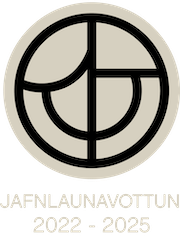Hver eru áhrif ryks frá Íslandi á loftslag heimskautasvæða? – verkefni lokið
Fréttatilkynning verkefnisstjóra
Rannsóknin miðaði að því að skýra áhrif ryks á loftgæði á Íslandi, hve langt rykið berst frá landinu, áhrif ryksins á eðliseiginleika lofthjúpsins sem og áhrif þess á jökla, snjó og hafsvæði. Að auki fóru fram mælingar á Suðurskautslandinu til samanburðar. Ryk frá Sahara sem barst til Íslands var einnig haft til samanburðar.
Rannsóknin staðfestir að öflugir íslenskir „rykstormar“ eru á meðal þeirra mestu sem mælast á jörðinni með styrk örefna (e. particulate matter – PM) > 50,000 µgm-3, sem er þúsund sinnum yfir ráðlögðum heilsumörkum. Rykstormar á Suðurskautslandinu eru einnig algengir yfir sumartímann þar sem rykmengun nær > 300 µgm-3 . Sýnum af ryki frá Íslandi var safnað á Svalbarða en þangað hefur það borist um 2000 km veg. Ljóseiginleikum íslensks ryks svipar til svartra kolefnisrykagna (black carbon), sem gleypa sólarljós og hitna, með mjög litlu endurvarpi (e. spectral reflectance – SR) þegar rykið fellur á snjó eða ís og SR gildi um 0,03 í andrúmsloftinu. Ryk frá Íslandi dregur í sig geisla á nær-innrauða sviðinu gangstætt ryki frá öðrum uppblásturssvæðum. Rykið inniheldur mikið af járni og er fremur auðleysanlegt, sem kann að hafa jákvæð áhrif á vistkerfi hafsvæða. Rykið er afar öflugt við myndun ískristalla (skýja) (e. ice-nucleation) sem hefur áhrif á byggingu skýjahulu og endurvarp ljóss frá þeim. Líkan til að spá fyrir um rykstorma á Íslandi var þróað á verkefnatímanum sem er aðgengilegt á netinu. Líkanið sýnir ljóslega tugi rykatburða sem flytur ryk frá Íslandi til Færeyja,
Bretlandseyja, Skandinavíu og Vestur-Evrópu ár hvert. Þátttakendum í íslenska Rykrannsóknafélaginu (Icelandic Aerosol and Dust Association) hefur fjölgað er það orðið aðili að Evrópusamtökunum. Viðamikil yfirlitsgrein um ryk á heimskautasvæðum var birt og nú er Ísland orðið virkur aðili í rannsóknum á ryki á alþjóðlegum vettvangi í fjölmörgum rannsóknaklösum.
English:
This project aimed to explain how is Icelandic dust affecting air quality in Iceland, how far it can travel from Iceland, what are the climatic impacts of Icelandic dust in atmosphere, on glaciers and snow, and in marine and terrestrial environments. Additionally, in situ aerosol measurements were also obtained in Antarctica to compare both High Latitude Dust (HLD) regions as well as comparisons of HLD with Saharan dust collected in Iceland. Icelandic dust storms are among the most severe storms measured on Earth with particulate matter, PM10, concentrations > 50,000 µgm-3 which 1000x above the recommended health limit. Dust storms in Antarctica were also frequent during Antarctic summer with PM10 concentrations > 300 µgm-3. Icelandic dust was also collected in Svalbard capable to travel about 2,000 km. Optical properties of Icelandic volcanic dust are similar to Black Carbon, the most powerful absorbing particle, with extreme decrease in spectral reflectance (SR) when deposited on snow or ice, and SR of about 0.03 when suspended in the air. Icelandic dust is also absorbing in near-infrared, contrarily to other dust particles. It has also high total Fe content and solubility, having potentially positive impacts on marine environments. Clearly Icelandic dust has impacts on the clouds as an effective Ice NucleationParticle changing the structure and albedo of the cloud. Online dust forecast model was created for Iceland and is available at several websites of stakeholders. It showed tens of cases of long-range transport to the Faroe and British Isle, Scandinavia and Western Europe annually.
Icelandic Aerosol and Dust Association has increased in number of members and it was accepted as a member aerosol association to European Aerosol Assembly in 2022. Extensive review paper on new HLD sources was published. Iceland is a valuable partner not only in European aerosol research, but also in global dust networks.
Information on how the results will be applied:
Operational dust forecast available online for public and stakeholders will be available through the
WMO SDS-WAS, WMO Barcelona Dust Regional Center, Agricultural University of Iceland, and new
interested stakeholders. WMO SDS-WAS including HLD model and research is a member body of the United Nations Coalition on Combating Sand and Dust Storms (UNCCD). Camera images are used by the Icelandic Met Office for daily forecasts and via Climatewatch by Enlaps initiative
(https://enlaps.io/us/planet-watch.html). Upcoming climate report by on Arctic Monitoring and
Assessment Programme (AMAP) Expert Group on ‘Arctic climate, air quality, and health impacts from short-lived climate forcers (SLCFs)' will serve as a main document on climate impact of HLD compared to Black Carbon next 5-10 years. The IceDust Association as a member society of the European Aerosol Assembly will continue in activities including annual HLD Workshops in Reykjavik, participation at the European and International Aerosol Conferences and in engaging stakeholders to the HLD research. IceDust will also apply for the UArctic Thematic Network. PI will remain as president of IceDust. Additional two students were included to the project and plan to finish their theses in 2023-2024.
A list of the project's outputs:
1. Online operational dust forecast based on the DREAM_Iceland model
2. Six papers published by Feb 2023 with acknowledgement, additional five without
acknowledgement by our partners, three papers in preparation by PI and at least five by our
partners.
3. IceDust Association is part of EU and global dust networks. Icedust is sustainable network for
HLD research coordinated by Iceland.IRF
4. Two thesis defended, two to be defended in 2023-2024.
5. New fundings achieved.
6. PI got fixed position at AUI.
Heiti verkefnis: Hver eru áhrif ryks frá Íslandi á loftslag heimskautasvæða?/How is
Icelandic Dust affecting high latitude climate systems?
Verkefnisstjóri: Pavla Dagsson Waldhauserová,
Landbúnaðarháskóla Íslands
Tegund styrks: Nýdoktorsstyrkur
Styrktímabil: 2021-2023
Fjárhæð styrks kr. 23.937.000
Tilvísunarnúmer Rannís: 207057


